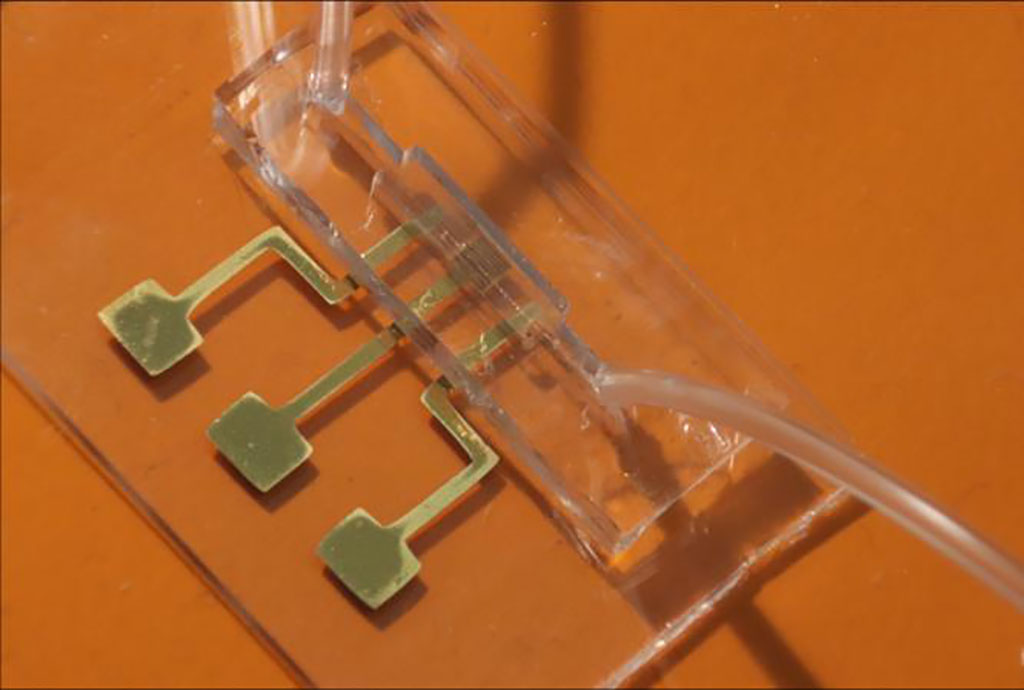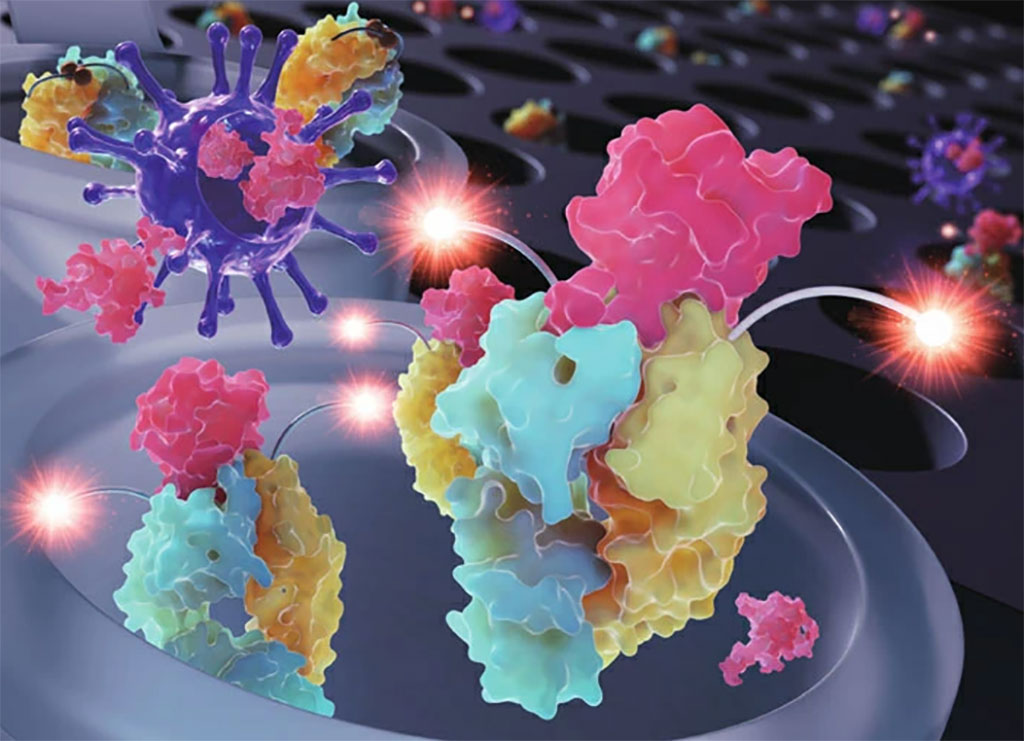COVID-19 Test Chip Made by Aerosol Jet Nanoparticle 3D Printing Detects SARS-CoV-2 Antibodies in 10-12 Seconds
By LabMedica International staff writers
Posted on 11 Jan 2021
An advanced nanomaterial-based biosensing platform that detects antibodies specific to SARS-CoV-2 within seconds can also help to quantify patient immunological response to the new vaccines with precision.Posted on 11 Jan 2021
The new testing platform developed by researchers at the Carnegie Mellon University (Pittsburgh, PA, USA) identifies the presence of two of the virus' antibodies, spike S1 protein and receptor binding domain (RBD), in a very small drop of blood (about five microliters). Antibody concentrations can be extremely low and still detected below one picomolar (0.15 nanograms per milliliter). This detection happens through an electrochemical reaction within a handheld microfluidic device which sends results almost immediately to a simple interface on a smart phone.

Image: An image of the COVID-19 test chip made by aerosol jet nanoparticle 3D printing (Photo courtesy of Carnegie Mellon University)
An additive manufacturing technology called aerosol jet 3D printing is responsible for the efficiency and accuracy of the testing platform. Tiny, inexpensive gold micropillar electrodes are printed at nanoscale using aerosol droplets that are thermally sintered together. This causes a rough, irregular surface that provides increased surface area of the micropillars and an enhanced electrochemical reaction, where antibodies can latch on to antigens coated on the electrode. The specific geometry allows the micropillars to load more proteins for detection, resulting in very accurate, quick results. The test has a very low error rate because the binding reaction between the antibody and antigen used in the device is highly selective. The researchers were able to exploit this natural design to their advantage.
"We utilized the latest advances in materials and manufacturing such as nanoparticle 3D printing to create a device that rapidly detects COVID-19 antibodies," said Rahul Panat, an associate professor of mechanical engineering at Carnegie Mellon who uses specialized additive manufacturing techniques for research ranging from brain-computer interfaces to biomonitoring devices. "Because our technique can quantify the immune response to vaccination, it is very relevant in the current environment."
Related Links:
Carnegie Mellon University









 assay.jpg)



